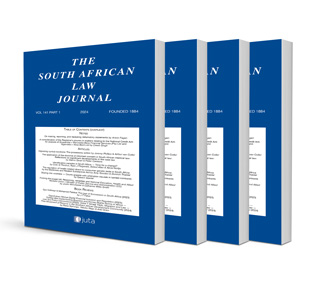An overview of indirect unfair discrimination protection in South Africa in the context of the Employment Equity Act’s affirmative action measures

ARTICLE
An overview of indirect unfair discrimination protection in South Africa in the context of the Employment Equity Act’s affirmative action measures
Author: Elsabé Huysamen
ISSN: 1996-2177
Affiliations: Lecturer, Department of Mercantile & Labour Law, University of the Western Cape
Source: South African Law Journal, Volume 142 Issue 4, p. 774-799
https://doi.org/10.47348/SALJ/v142/i4a7
Abstract
This article examines the relationship between affirmative action and protection against indirect discrimination in South African employment law, particularly under the Employment Equity Act 55 of 1998. Ultimately, the article aims to establish the extent to which reliance on indirect discrimination protection still plays a role outside the shadow of the EEA’s affirmative action measures. While both mechanisms aim to promote transformative substantive equality, they do so through distinct, yet overlapping, means. Affirmative action imposes proactive obligations on designated employers to address systemic disadvantage, potentially reducing the scope for indirect discrimination claims. However, this article argues that indirect discrimination remains a crucial safeguard, especially in contexts where affirmative action is absent, poorly implemented, or limited in scope. Key limitations of the EEA’s affirmative action measures include its application only to designated employers and its focus exclusively on race, gender and disability. Additionally, the enforcement of affirmative action obligations relies solely on administrative mechanisms, offering little recourse for aggrieved individuals. The article argues that indirect discrimination protection fills these gaps by identifying and addressing covert systemic inequalities. Ultimately, the article asserts that indirect discrimination retains significant legal and transformative value, particularly as a corrective mechanism for structural inequality. It concludes that affirmative action and indirect discrimination should be viewed as complementary tools rather than substitutes in pursuing equality and social justice in post-apartheid South Africa.